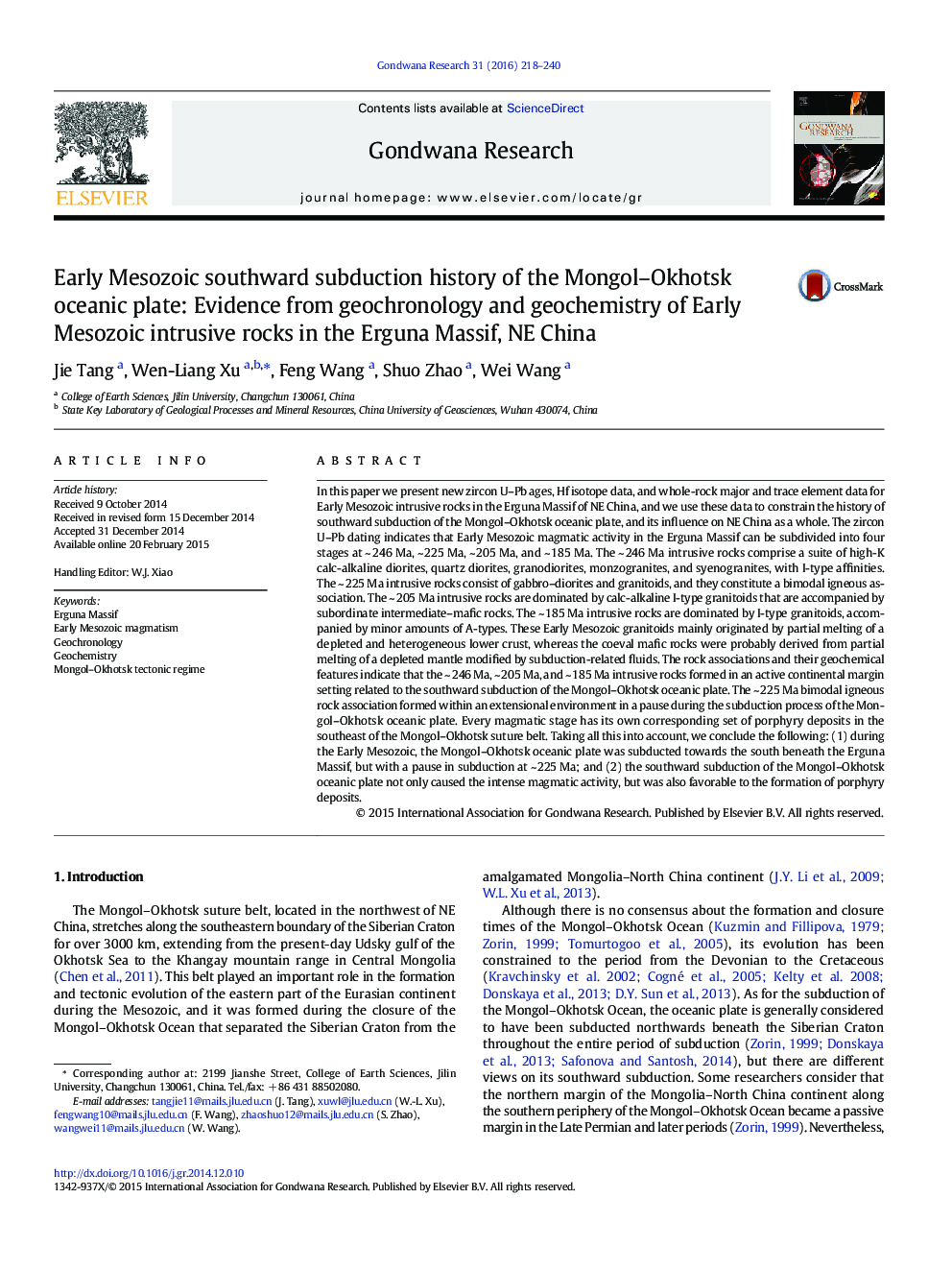| کد مقاله | کد نشریه | سال انتشار | مقاله انگلیسی | نسخه تمام متن |
|---|---|---|---|---|
| 4726681 | 1640140 | 2016 | 23 صفحه PDF | دانلود رایگان |

• Early Mesozoic magmatisms in the Erguna Massif can be subdivided into four stages.
• Early Mesozoic magmatisms formed mainly in an active continental margin setting.
• The Mongol–Okhotsk oceanic plate was subducted southward during Early Mesozoic.
In this paper we present new zircon U–Pb ages, Hf isotope data, and whole-rock major and trace element data for Early Mesozoic intrusive rocks in the Erguna Massif of NE China, and we use these data to constrain the history of southward subduction of the Mongol–Okhotsk oceanic plate, and its influence on NE China as a whole. The zircon U–Pb dating indicates that Early Mesozoic magmatic activity in the Erguna Massif can be subdivided into four stages at ~ 246 Ma, ~ 225 Ma, ~ 205 Ma, and ~ 185 Ma. The ~ 246 Ma intrusive rocks comprise a suite of high-K calc-alkaline diorites, quartz diorites, granodiorites, monzogranites, and syenogranites, with I-type affinities. The ~ 225 Ma intrusive rocks consist of gabbro–diorites and granitoids, and they constitute a bimodal igneous association. The ~ 205 Ma intrusive rocks are dominated by calc-alkaline I-type granitoids that are accompanied by subordinate intermediate–mafic rocks. The ~ 185 Ma intrusive rocks are dominated by I-type granitoids, accompanied by minor amounts of A-types. These Early Mesozoic granitoids mainly originated by partial melting of a depleted and heterogeneous lower crust, whereas the coeval mafic rocks were probably derived from partial melting of a depleted mantle modified by subduction-related fluids. The rock associations and their geochemical features indicate that the ~ 246 Ma, ~ 205 Ma, and ~ 185 Ma intrusive rocks formed in an active continental margin setting related to the southward subduction of the Mongol–Okhotsk oceanic plate. The ~ 225 Ma bimodal igneous rock association formed within an extensional environment in a pause during the subduction process of the Mongol–Okhotsk oceanic plate. Every magmatic stage has its own corresponding set of porphyry deposits in the southeast of the Mongol–Okhotsk suture belt. Taking all this into account, we conclude the following: (1) during the Early Mesozoic, the Mongol–Okhotsk oceanic plate was subducted towards the south beneath the Erguna Massif, but with a pause in subduction at ~ 225 Ma; and (2) the southward subduction of the Mongol–Okhotsk oceanic plate not only caused the intense magmatic activity, but was also favorable to the formation of porphyry deposits.
Figure optionsDownload as PowerPoint slide
Journal: Gondwana Research - Volume 31, March 2016, Pages 218–240